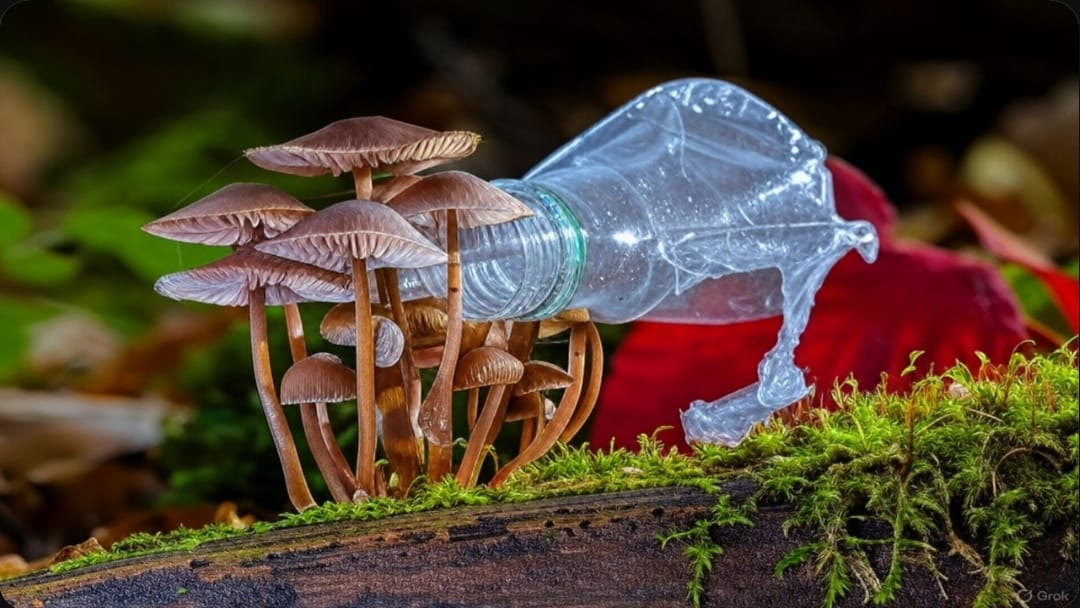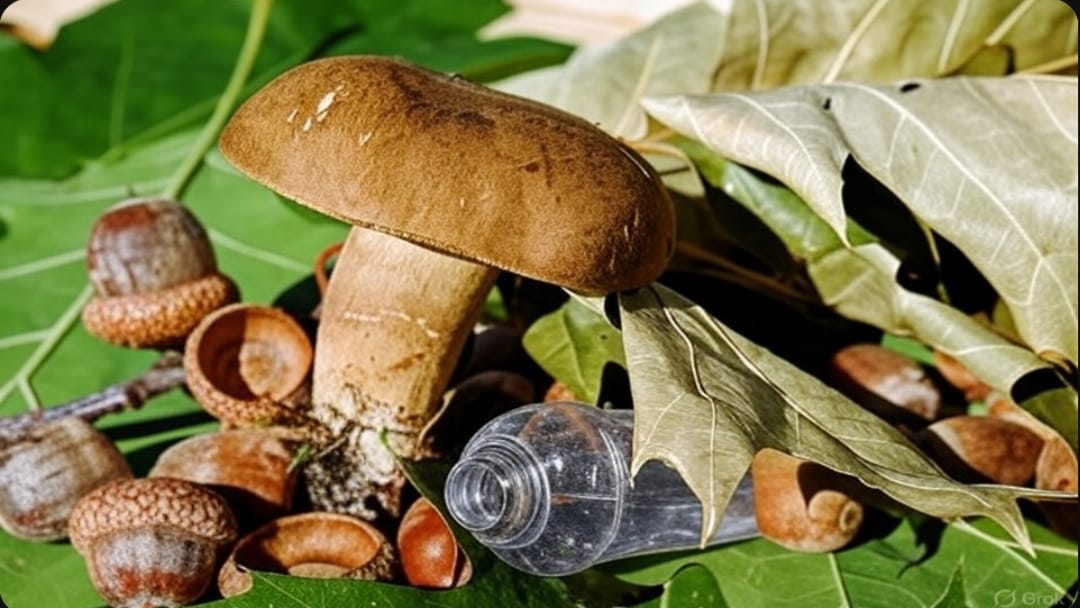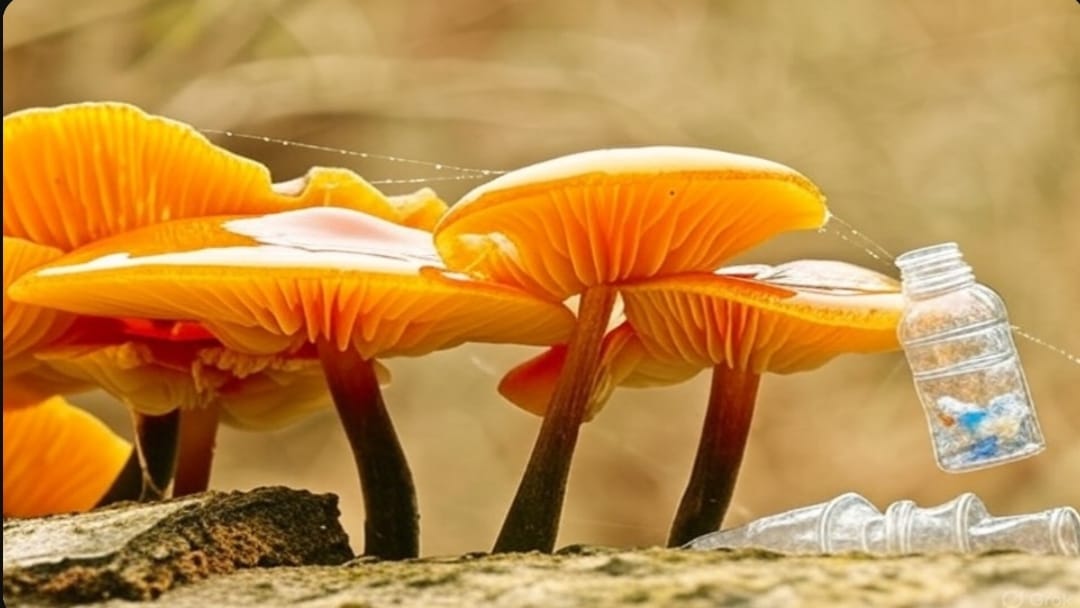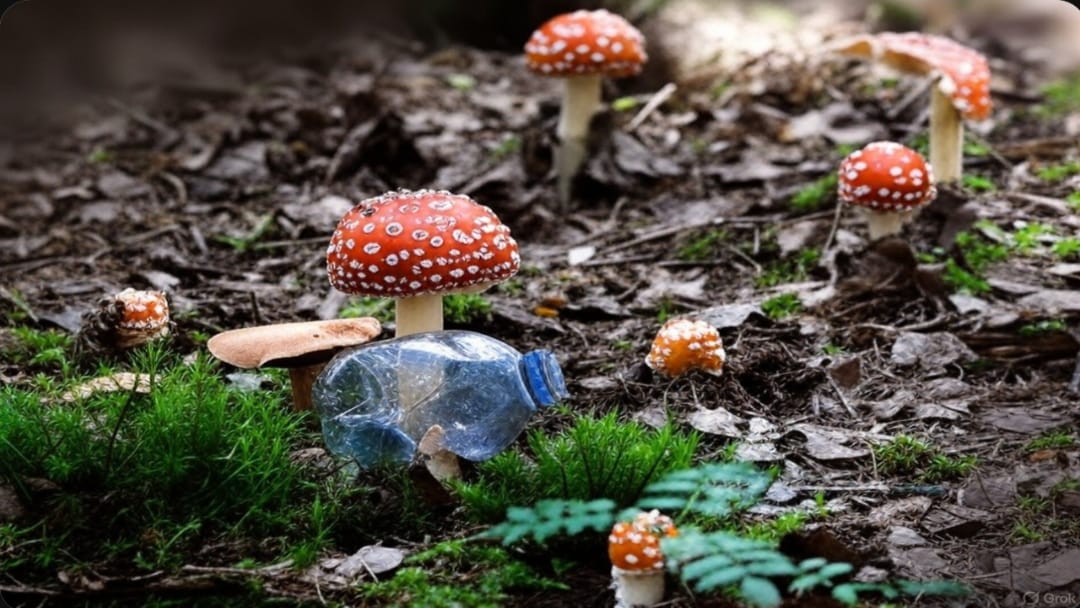Plastic pollution is choking the planet. Fast fashion is using plastic more and more in the textile industry, which is why Curated By Pamela promotes vintage and pre loved luxury as a source of sustainable lifestyle investment that honours both our planet and our pocketbooks.
 Every year, we produce more than 400 million tons of plastic—and much of it ends up in our oceans, landfills, and even our food. From vast floating garbage patches to microscopic particles found in fish and drinking water, plastic waste is now a global emergency.
Every year, we produce more than 400 million tons of plastic—and much of it ends up in our oceans, landfills, and even our food. From vast floating garbage patches to microscopic particles found in fish and drinking water, plastic waste is now a global emergency.
But what if the solution isn’t in a lab or landfill—but growing quietly in the forest?
Scientists around the world are zeroing in on a surprising ally in the fight against plastic: mushrooms. Yes, certain fungi have shown a remarkable ability to digest plastic—breaking it down using natural enzymes. If developed properly, this could be a game-changing breakthrough in how we handle plastic waste.
Let’s put it in perspective: Plastic never really goes away—it just breaks down into smaller and smaller particles called microplastics. These fragments now turn up everywhere: in rainwater, in sea salt, in marine animals, and even in human blood. The oceans alone are estimated to hold over 150 million tons of plastic, forming swirling trash zones like the infamous Great Pacific Garbage Patch.
This is where fungi enter the picture—not as an alternative to recycling, but as a potential clean-up crew.
The Mushroom Effect: Nature’s Decomposers
Fungi are nature’s recyclers. In the wild, they break down tough materials like fallen trees and animal remains, releasing nutrients back into the ecosystem. But recent studies have found that some mushrooms go a step further—they can break down synthetic materials like plastic.

It’s not science fiction—it’s science. And it’s happening now.
Together, these fungi have opened the door to what could become one of the most exciting biological breakthroughs of our time.
How It Works: Breaking Down Plastic with Enzymes
The process is fairly straightforward—at least in theory. Here’s how fungi decompose plastic:
- Enzymes target the plastic – The fungi secrete enzymes that break down the long-chain polymers in plastic into smaller molecules.
- Plastic becomes food – Once broken down, the fungi absorb these molecules as a source of energy.
- Waste becomes biomass – What was once trash becomes organic matter that fungi use to grow—essentially turning plastic into life.
Lab tests have shown some fungi can reduce plastic weight by up to 60% in just a few weeks. But success depends on several factors: the type of plastic, enzyme concentration, and environmental conditions like temperature and humidity.
Turning Science Into Solutions
So what does this mean in practice? The possibilities are vast:
- Landfill cleanup – Introducing fungi to landfill sites could reduce plastic volume and toxicity over time.
- Water purification – Fungi might help filter out microplastics from wastewater treatment systems.
- Smarter materials – Scientists are exploring ways to create plastics that are easier for fungi to break down, using biodegradable components from the start.

Startups like Biohm in the UK and Fungi Mutarium in Austria are already working to scale these ideas, creating fungal materials for packaging, insulation, and food-safe containers.
Of course, this isn’t a magic solution. Plastic eating mushrooms still face big hurdles:
They’re picky – Fungi need just the right environment—specific humidity, temperature, and pH—to do their work.
Some plastics are tougher than others – While polyurethane and polyester break down relatively easily, others like HDPE (used in milk jugs) are much more resistant.
Ecological risks – Introducing fungi into open environments could affect local ecosystems in unpredictable ways.
Still, the potential is hard to ignore. Mushrooms offer a natural, low-energy way to tackle one of the most daunting problems of our time. If paired with smarter design, better recycling, and strong environmental policy, fungi could help shift the tide against plastic waste.

